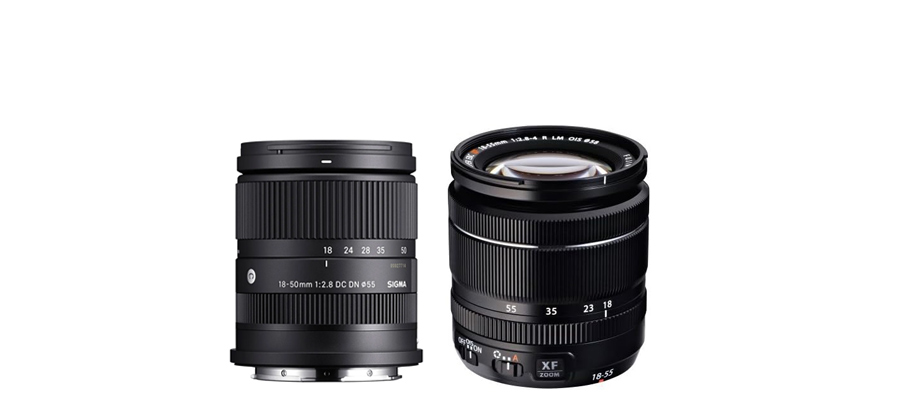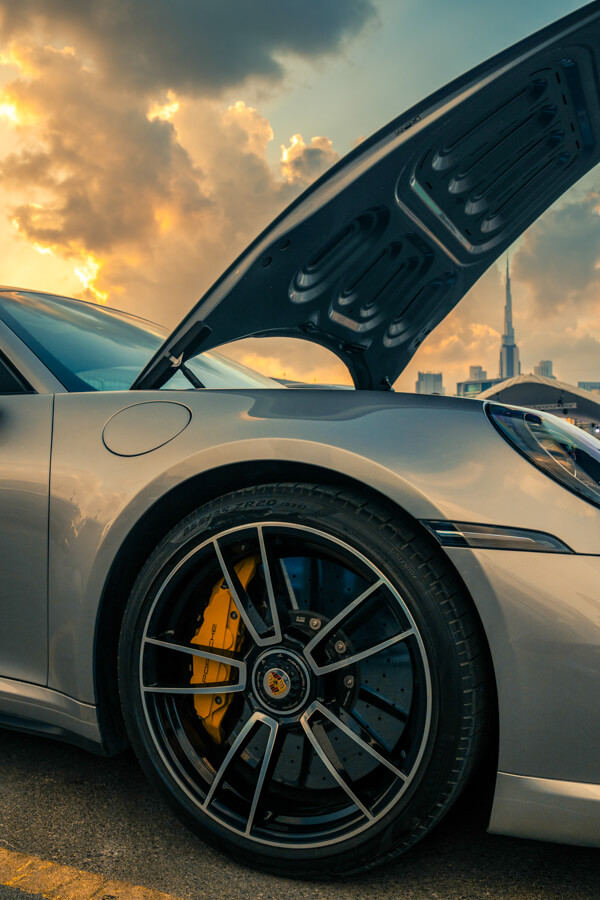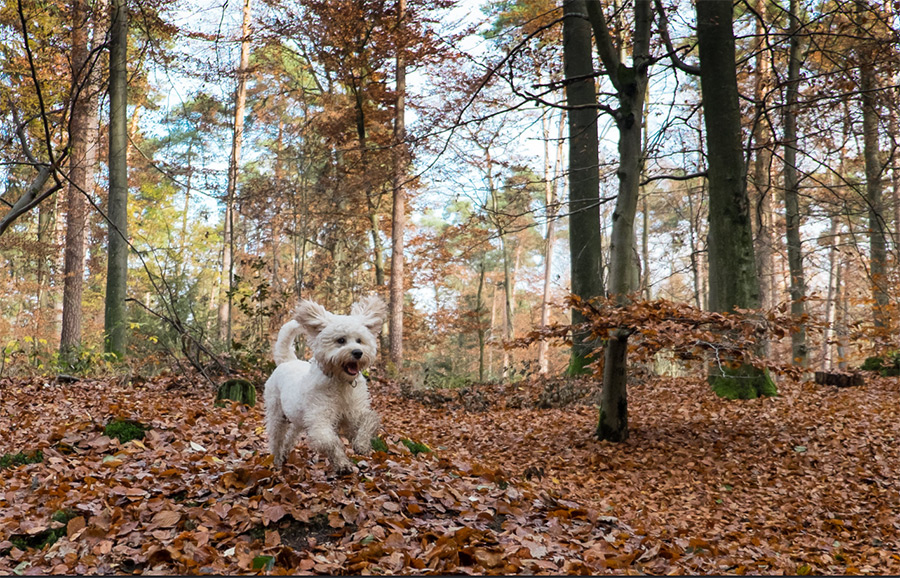
Do you want to replace the kit Fujifilm 18-55mm f/2.8-4 R LM OIS with a lens that offers better image quality?
The Sigma 18-50mm f/2.8 is optically great, has an f/2.8 aperture and can absolutely replace your current kit lens if you need something better.

Sigma 18-50mm f/2.8 DC DN
- Focal Length: 18-50mm
- Max Aperture: f/2.8
- Mount: Fujifilm X
- Stabilized: ❌
- Weather-Sealing: ❌
- Weight: 290g
- Released: 2021
- Amazon ($)
Fujifilm 18-55mm f/2.8-4 R LM OIS
-
- Focal Length: 18-55mm
- Max Aperture: f/2.8-4
- Mount: Fujifilm X
- Stabilized: ✔️
- Weather-Sealing: ❌
- Weight: 310g
- Released: 2012
- Amazon ($)
The Fujifilm 18-55mm f/2.8 is an okay lens, released back in 2012. Compared to kit lenses from most other camera companies, it still holds up well to this date.
In this comparison, I will go over all of their advantages and how they compare in different photography styles.
If you’re in a hurry, the advantages below are all you need to make the final decision.
Advantages of Sigma 18-50mm f/2.8 DC DN
Advantages of Fujifilm XF 18-55mm f/2.8-4 R LM OIS
Now, let’s see which features and advantages are actually important for your specific needs and which ones only sound good on paper.
Sigma 18-50mm vs Fujifilm 18-55mm: Detailed Comparison
🔭 1. Focal Length
- Sigma 18-50mm: From 18mm to 50mm
- Fujifilm 18-55mm: From 18mm to 55mm
- Winner: Fujifilm 🏆
The Fujifilm 18-55mm f/2.8-4 R LM OIS can zoom 5mm further than the Sigma 18-50mm f/2.8 DC DN.
Is this a big deal?
No, their focal length is nearly identical and isn’t even remotely an important factor to decide which one is better.

🎥 2. Maximum Aperture
- Sigma 18-50mm: Constant maximum aperture of f/2.8 at all focal lengths
- Fujifilm 18-55mm: Variable aperture; f/2.8 at 18mm and f/4 at 55mm
- Winner: Sigma 🏆
The Sigma 18-50mm f/2.8 DC DN can shoot at f/2.8 regardless of the focal length you’re at.
Shooting with f/2.8 makes it much more usable for low light scenarios, indoor events, weddings and portraits. Aperture f/2.8 brings twice as much light as f/4! You can see example shots in my Sigma 18-50mm review.
On the other hand, the Fujifilm 18-55mm f/2.8-4 R LM OIS is still a good choice, considering it can shoot at f/2.8 at 18mm. Most kit lenses from other camera companies aren’t that bright!
One of the major reasons for Sigma’s higher price tag is this constant f/2.8 aperture.
📏 3. Dimensions & Weight
- Sigma 18-50mm: 290g
- Fujifilm 18-55mm: 310g
- Winner: Sigma 🏆
The Sigma 18-50mm f/2.8 DG DN is 10g lighter than the Fujifilm 18-55mm f/2.8-4 R LM OIS.
Nothing important here, both lenses are basically extremely light.
- Sigma 18-50mm: 65.4 x 74.5mm
- Fujifilm 18-55mm: 65.0 x 70.4mm
- Winner: Fujifilm 🏆
Again, the dimensions of Sigma and Fuji are nearly identical.
As far as traveling goes, both lenses will hardly take any space in your bag.
🎥 4. Minimum Aperture
- Sigma 18-50mm: f/22
- Fujifilm 18-55mm: f/22
- Winner: Tie
Another feature where both lenses are the same. Aperture f/22 is small enough to achieve a great depth of field, which is super useful for landscape photography.
Personally, I almost never go smaller than f/16, especially because of diffraction which can reduce image quality. You can see more about this in my aperture tutorial.
🔬 5. Minimum Focusing Distance
- Sigma 18-50mm: 12.1cm / 4.72″
- Fujifilm 18-55mm: 40cm / 15.75″
- Winner: Sigma 🏆
This is where the Sigma 18-50mm f/2.8 DC DN really shines!
A shorter minimum focusing distance allows you to get much closer to your subject, making it ideal for macro photography.
With a 12.1cm / 4.72″ closest focusing distance, you can almost touch the subject with the front element of your lens; it’s that close! This is great news for product, food, flower and insect photography. I can’t think of many other lenses that come close to this, and there are hundreds of them.
The Fujifilm 18-55mm is quite disappointing here.

⛅ 6. Weather-Sealing
- Sigma 18-50mm: ❌
- Fujifilm 18-55mm: ❌
- Winner: Fujifilm 🏆
Neither of these two lenses feature any advanced weather-sealing, so you’ll have to be a little bit careful when shooting in difficult weather.
Don’t worry though, for casual use, all lenses can handle a normal amount of rain, snow and dust.
🎦 7. Image Stabilization
- Sigma 18-50mm: ❌
- Fujifilm 18-55mm: ✔️
- Winner: Tie 🏆
Image stabilization helps make your images appear less blurry when shooting with slow shutter speeds.
The Fujifilm 18-55mm f/2.8-4 R LM OIS offers image stabilization, which is a nice addition to this compact, affordable lens. It won’t help freeze moving subjects, it will only help correct your unwanted movement when taking a picture.
If your Fujifilm camera has built-in stabilization, then you don’t have to worry about having one in lens as well.
💿 8. Aperture Blades
- Sigma 18-50mm: 7 rounded diaphragm blades
- Fujifilm 18-55mm: 7 rounded diaphragm blades
- Winner: Tie
A lens with more diaphragm blades will usually produce smoother bokeh, aka background blur.
Both lenses have 7, so there’s nothing to compare here. Furthermore, all telephoto lenses produce good looking bokeh compared to wide-angle lenses.
📽 9. Filter Size
- Sigma 18-50mm: 55m filter size
- Fujifilm 18-55mm: 58mm filter size
- Winner: Sigma 🏆
Both lenses accept very small filters. They’re easy and cheap to find, so even though the Sigma wins on paper, this won’t affect your budget that much.
💲 10. Price
- Sigma 18-50mm: ~$549
- Fujifilm 18-55mm: ~$499
- Winner: Fujifilm 🏆
The Sigma 18-50mm f/2.8 DG DN is around $50 more than the Fujifilm 18-55mm.
However, most stores only have used versions of the Fuji 18-55mm, seeing as it’s a kit lens and rarely sold separately.

Sigma 18-50mm vs Fujifilm 18-55mm: Photography Type
From 1 being the worst, 5 being the best.
It’s best to choose a lens that suits your favorite photography types, or offers you something that your current gear is not good enough for.
As you can see, both lenses are nearly identical for most types of photography.
The 18-50mm and 16-55mm focal length is ideal for traveling and all-around photography. This includes portraits, landscape and even regular sports photography.
Sigma 18-50mm vs Fujifilm 18-55mm: Comparison Table
Better specifications are highlighted in green.
| 🎥 Lens Specification | Sigma 18-50mm f/2.8 | Fujifilm 18-55mm f/2.8-4 R LM OIS |
|---|---|---|
| Focal Length | 18-50mm | 18-55mm |
| 35mm Equivalent | 27-75mm | 27-84mm |
| Mount | Fujifilm X (APS-C) | Fujifilm X (APS-C) |
| Maximum Aperture | f/2.8 | f/2.8-4 |
| Minimum Aperture | f/22 | f/22 |
| Filter Size | 55 mm | 58 mm |
| Maximum Magnification | 0.36x | 0.15x |
| Minimum Focus Distance | 12.1 cm / 4.72″ | 40 cm / 15.75″ |
| Aperture Ring | No | Yes |
| Focus Type | Autofocus | Autofocus |
| Motor Type | Stepping Motor | Linear Motor |
| Lens Construction | 13 elements in 10 groups | 14 elements in 10 groups |
| Aperture Blades | 7 (rounded) | 7 (rounded) |
| Image Stabilization | ❌ | ✔️ |
| Weather Sealing | ❌ | ❌ |
| Dimensions (mm) | 65.4 x 74.5mm / 2.57″ x 2.93″ | 65.0 x 70.4mm / 2.56″ x 2.77″ |
| Weight (g) | 290g / 0.64lb | 310g / 0.68lb |
| Hood Included | Yes | Yes |
| Released | 2021 | 2012 |
| Price | Amazon | Amazon |
So, which lens is the better one?

Choose the Sigma 18-50mm f/2.8 if:
- You want a lens for low light and portraits (f/2.8 vs f/4)
- You often shoot macro, close-up photography
- You want a newer lens with better auto focusing
Choose the Fujifilm 18-55mm f/2.8-4 if:
- You want a lens with an aperture ring
- Your camera doesn’t have built-in stabilization and you find it important

